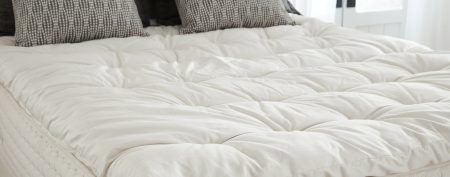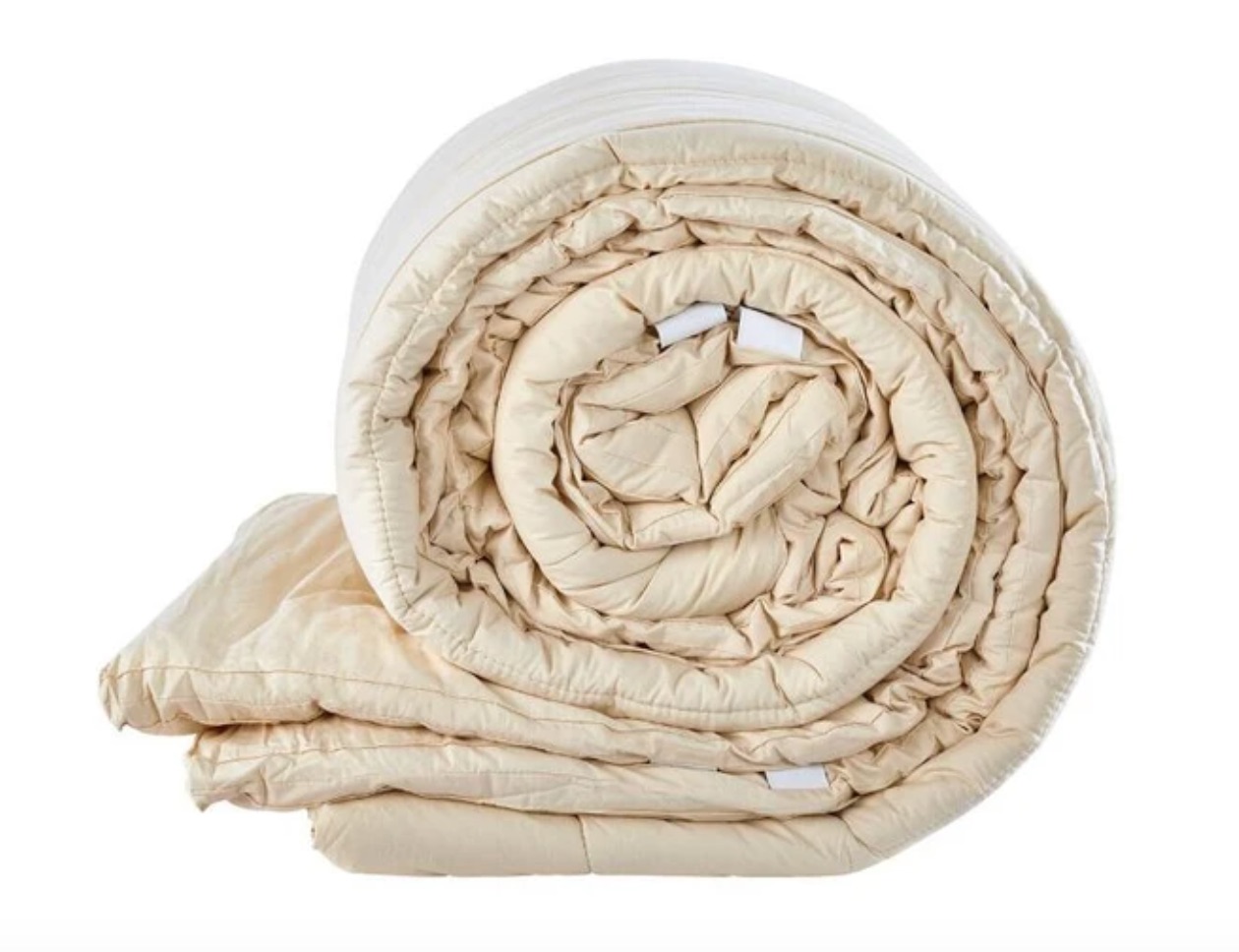Cleaning and Caring for a Wool Topper
When preparing to clean a wool topper, owners should first consult the care instructions printed on the product tag. If the tag is missing or it does not contain instruction, they can check for an online product page on the manufacturer’s website or contact customer service personnel via phone, email, or live onsite chat.
Washing and drying options for wool toppers include:
Machine Washing and Drying
Many wool toppers can be washed and dried in machines; some brands recommend front-loading washers and dryers. When washing, be sure to use cold water on a delicate setting. Wash with mild detergent specifically designed for wool products, such as Woolite. Some instruction tags instruct owners to dry their wool topper on a tumble low or air cycle setting. However, following these instructions can – and often does – lead to topper shrinkage. Many wool topper owners prefer to line dry or dry clean the item instead.
Some toppers should not be washed or dried in machines, but come with removable covers – usually made of cotton or polyester – that can be machine-washed and dried at most temperatures or settings. However, owners should also use the instruction tag to ensure they are cleaning the cover properly.
Spot Cleaning
Some toppers – including those that contain untreated natural or organic wool – should not be washed/dried in machines or dry cleaned. Owners should only spot clean these products with water and soap. When spot cleaning, make sure not to get the entire topper wet; this can compromise the wool fibers and cause the topper to become misshapen and lumpy.
Dry Cleaning
Dry cleaning is acceptable for most wool toppers as an alternative to machine-washing or spot cleaning. However, make sure the instruction tag does not prohibit dry cleaning before bringing the topper to a cleaner. A notable downside of dry cleaning is the added expense, but it is also convenient and widely available.
Additionally, here are a few tips for caring for and preserving a wool topper:
- Sheet Barrier: Sleeping directly on a wool topper can cause the fabric to become soiled; this may lead to bacteria buildup, as well as discoloration. A good remedy for this problem is for sleepers to place at least one sheet between their body and the topper surface. Thin, breathable sheets work best because they don’t compromise the topper’s cushioning and temperature-regulating abilities.
- Sporadic Washing: If a topper can be washed and dried in a machine, this doesn’t mean it should be cleaned on a weekly basis. Repeated wash and dry cycles will cause the topper to deteriorate rather quickly. Try to limit wash cycles to one per month at the most.
- Topper Rotation: By rotating the topper, owners will prevent one side from becoming flatter than the other. Flip every few weeks for best results. This measure may not be necessary unless the topper is used on a nightly or regular basis.
Sunlight treatment: Wool is a natural material that can be rejuvenated through sunlight. Once or twice a year – depending on local climate – set the topper out in the open sun for a few hours. This will help remove lingering odors and refresh the cover.




